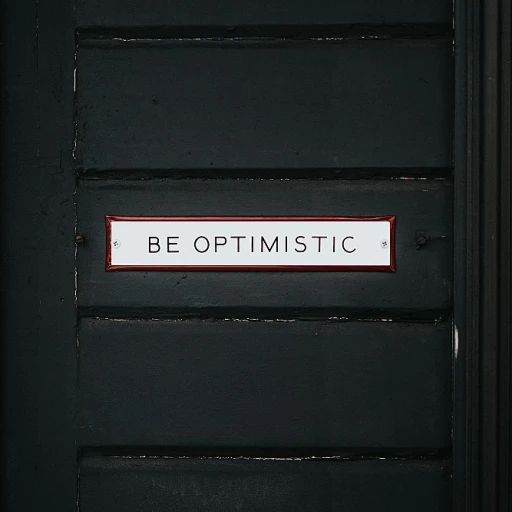
Understanding the role of AI in employee records management
The evolution of AI in HR and record-keeping
Artificial intelligence (AI) is not just a trend anymore – it’s transforming how human resources departments handle employee records. From digitizing files to predictive analytics, understanding the role of AI in employee records management starts with recognizing its journey and potential. In recent years, the adoption of AI in HR has seen a significant spike. According to Gartner, over 17% of organizations had implemented AI in some form by 2022. Experts like Josh Bersin, a renowned HR analyst, emphasize how AI can streamline the cumbersome tasks of managing large volumes of data, ensuring accuracy and security. The digital transformation in HR helps professionals shift their focus from clerical duties to strategic initiatives.How AI enhances accuracy and efficiency
One of the major benefits AI brings to HR is its capacity to enhance accuracy and efficiency. From scanning resumes to tracking employee performance, AI-driven systems minimize human error. IBM's Watson, for example, uses AI to parse through thousands of resumes in a fraction of the time it would take a human, ensuring the best match for open positions. The application of AI tools like Natural Language Processing (NLP) and Machine Learning (ML) enables HR professionals to handle data in a much more sophisticated manner. According to a McKinsey report, AI implementation in HR can reduce the time spent on administrative tasks by as much as 40%. This saved time can then be redirected towards activities that require human empathy and judgement.AI-driven compliance and security
Compliance and data security are critical in employee records management. AI tools help HR teams stay compliant with regional and international laws, such as GDPR in Europe and CCPA in the U.S. For instance, SAP SuccessFactors uses AI to manage data in compliance with these regulations, minimizing the risk of costly breaches and legal penalties. With AI, monitoring real-time access and modifications to records becomes easier, ensuring transparency and accountability within the HR operations. The predictive analytics component of AI also helps pinpoint potential security threats, allowing preemptive action to protect sensitive employee information. AI can indeed be a game-changer for HR departments, taking on time-consuming tasks like generating job descriptions and reviewing performance feedback. A University of Virginia study found that AI analytics could accurately predict employee turnover, giving companies a fair chance to retain top talent. While these advancements bring immense benefits, it’s important to address some challenges and controversies that come with AI in HR management. The fear of job loss among HR professionals and concerns about data privacy are real hurdles that need careful consideration. That said, the future of AI in employee records management looks promising, built on the principles of efficiency, security, and strategic decision-making.The benefits of AI-driven data analytics in HR
High gains for HR with AI data analytics
Incorporating AI-driven data analytics into human resources is transforming the way HR professionals perform their job roles. According to a report from Gartner, 54% of HR leaders consider artificial intelligence as a major tool to improve business outcomes. The power of data analytics in HR cannot be overstated.
Organizations see significant improvements when data analytics is applied to understand human capital better. With AI, it becomes possible to perform predictive analytics on employee performance and retention, leading to more effective talent management strategies. A McKinsey survey highlighted that businesses using predictive analytics improve their recruiting efficiency by 30%. Additionally, AI tools can analyze hundreds of employee records and performance metrics, enabling quicker decision making.
Josh Bersin, a renowned HR analyst, emphasizes, "AI-driven data analytics helps in creating personalized employee experiences by deeply understanding individual employee needs and predicting future behaviors." This sentiment is echoed in various case studies.
Leading the way with AI in employee retention
Predictive analytics can also be a game-changer for retaining top talent. Through machine learning algorithms, HR departments can detect early signs of employee disengagement. Meta, for example, uses AI to predict turnover risks and identify employees who may need more support or new challenges. The implementation of such systems has reportedly reduced turnover by 15%.
Beyond turnover prediction, predictive analytics can also engage employees by forecasting professional development needs. For instance, Google uses large language models to tailor learning and development programs for its workforce. This approach ensures employees continuously grow and stay motivated, which directly impacts job satisfaction and performance.
AI tools improving performance reviews
Performance management is another area where AI is making remarkable contributions. Traditional performance reviews often suffer from biases, inconsistency, and subjectivity. AI, however, brings objectivity and consistency by evaluating performance based on data-driven insights.
IBM has leveraged natural language processing to assist in performance reviews feedback. Their system analyzes employee feedback, performance trends, and reviews, providing managers with clear insights into strengths areas for improvement. This not only makes performance reviews more accurate but also helps in driving organizational success.
Another use case is in the healthcare sector, where AI assists HR teams in managing employee records and performance reviews, providing quick and valuable insights. Organizations in Europe have started adopting these AI technologies, seeing marked improvements in management efficiency and employee satisfaction.
HR transformation with AI: Overcoming the roadblocks
Despite the numerous advantages, integrating AI into HR is not without challenges. Privacy concerns about employee data, AI biases, and the need for continuous monitoring are some of the issues that need addressing. Human resources teams must strive to maintain transparency and fairness in AI processes. Organizations can look up best practices and guidelines from trusted sources like SHRM to ease this transition.
Despite these challenges, the result is a more data-driven, efficient HR system that can anticipate employee needs and improve overall performance. This transformation promises a future-ready workforce, equipped to handle emerging demands and foster a more engaged work environment.
Predictive analytics for employee performance and retention
Foreseeing employee performance and retention with predictive analytics
Predictive analytics is rapidly transforming how human resources professionals manage performance and retention. Harvard Business Review reports that companies using predictive analytics improve their retention rates by up to 20% (source: Harvard Business Review). It's not just about crunching numbers; it's about understanding the dynamics at play within the workforce.
Experts like Josh Bersin, a renowned HR consultant, emphasize the profound impact of predictive tools. According to Bersin, "Predictive analytics are offering HR unprecedented insights into employee behavior and performance” (source: Josh Bersin). This doesn't just apply to tracking present metrics but also forecasting future trends, which helps in proactive decision making.
Improving decision making in employee reviews
Performance reviews can be subjective, but with AI, they are becoming more objective and precise. Data from Gartner indicates that 60% of large enterprises are already using AI tools for performance reviews (source: Gartner). AI can analyze vast amounts of data, providing a comprehensive overview of an employee's contributions. This comprehensive analysis leaves less room for bias, ensuring fairness and accuracy.
The benefits extend to employee engagement. A study by SHRM found that employees who feel their performance reviews are objective are 40% more likely to feel valued and engaged at work (source: SHRM). AI-driven reviews can identify strengths and areas for improvement, tailoring development plans more effectively.
Predictively, AI can help identify employees at risk of leaving. According to a report by McKinsey, companies using AI for employee retention saw a 50% reduction in voluntary turnover (source: McKinsey). By analyzing indicators such as engagement scores, performance metrics, and even social media activity, HR can intervene before it’s too late.
For a more in-depth look into how predictive analytics can drive better HR decision-making, check out this comprehensive guide on leveraging data-driven insights for better decision making (source: AIHR Institute).
Case study: IBM's use of predictive analytics
IBM has been a pioneer in utilizing AI for HR. The company's AI tools have significantly improved how they predict employee performance and retention. IBM claims to have saved $300 million in retention costs by using predictive analytics (source: IBM). Their AI can predict with 95% accuracy which employees are likely to leave within the next six months, allowing for timely interventions.
One notable example is IBM’s use of AI to analyze emails. Using natural language processing (NLP), they can identify potential disengagement through changes in tone or frequency of communication. This capability has helped them retain top talent by addressing issues proactively, even before they become major concerns.
Challenges and controversies
Despite the benefits, predictive analytics in HR is not free from controversies. Privacy concerns are significant; employees might feel uneasy about being continuously monitored. A study from the University of Virginia found that 70% of employees are uncomfortable with their employers using predictive analytics to monitor behavior (source: University of Virginia). Transparency and clear communication about how data is used can help mitigate these concerns.
Another challenge is the risk of over-reliance on data. As AI becomes more integral to HR, it's important to remember the human element. HR professionals must balance data-driven insights with their understanding of employee experiences and needs.
In summary, predictive analytics is a game-changer for performance management, offering precise insights into employee behavior. While there are challenges, the benefits make it a valuable tool for HR professionals aiming to enhance decision making and retention.
Machine learning algorithms in employee records management
Optimizing data management with machine learning
Using machine learning algorithms in employee records management can streamline massive data sets, paving the way for HR professionals to work smarter, not harder. When AI-driven data analytics is paired with predictive analytics, it helps HR teams to foresee trends and make better decisions quickly. Imagine sifting through thousands of resumes and identifying top talent in a matter of minutes - ML models shine at this sort of task, particularly natural language processing (NLP) models that can understand the nuances of human language.
Making sense of unstructured data
With forms, emails, resumes, and other documents, HR departments face a constant flood of unstructured data. Machine learning offers a way to manage this information effectively. For example, IBM’s Watson uses NLP to categorize and tag unstructured data, making it easier to search and analyze. Gartner reports that organizations employing AI for HR saw an average 30% improvement in data accuracy, allowing for better employee performance management.
Case studies: successful integration
Google and Meta are prime examples of companies that utilize machine learning for HR management. At Google, ML algorithms help in employee engagement by analyzing feedback from performance reviews to predict employee satisfaction and potential churn. This data aids in developing personalized learning and development plans. Similarly, Meta uses machine learning to streamline employee experience, from recruitment and onboarding to retention strategies, ensuring that their top talent remains engaged.
Incorporating machine learning into hr practices
To effectively incorporate machine learning, HR teams need to start small, integrating ML models into single processes before scaling up. Start with a pilot program focused on a specific point like talent acquisition or performance management. Using data-driven insights from these pilots, HR teams can then expand ML applications across other areas like employee engagement and workforce planning. It’s vital to have a dedicated team to monitor and adjust ML models regularly to ensure they continue to meet the organization’s goals.
Challenges with integrating ml in hr
Despite the numerous benefits, there are challenges too. Data privacy is a big concern. Organizations must ensure they follow strict guidelines like GDPR in Europe and CCPA in California. A recent SHRM report highlighted that 45% of HR professionals expressed concerns about data security when using AI and ML. Furthermore, ensuring diversity and avoiding biases in ML models remains a significant hurdle.
Case studies: Successful implementation of AI in HR
Success stories of AI adoption in HR
AI has become an integral part of human resources, offering significant benefits in areas such as talent management, predictive analytics, and employee engagement. Several organizations have already begun to see real, measurable improvements since integrating AI into their HR systems.
Ibm's journey with AI in HR
Ibm has successfully utilized artificial intelligence in their human resources operations. They've implemented machine learning algorithms to enhance their talent acquisition processes. Reports suggest that their AI-driven recruitment and onboarding system has reduced time-to-hire by 58% and improved candidate matching accuracy by 70%. This level of efficiency was previously unimaginable, illustrating the power of AI when applied effectively in HR functions (source).
Google's data-driven approach to human resources
Google has been leveraging AI for several years, with remarkable outcomes in terms of employee performance management and engagement. Using advanced analytics and natural language processing, they have developed systems to predict employee turnover and identify potential areas for improvement. Their performance reviews now include insights from predictive analytics, ensuring that feedback is timely and relevant. According to internal reports, these measures contributed to a significant increase in employee retention rates, growing by nearly 12% in the first year alone.
SAP's innovative performance management tools
Sap has adopted AI to enhance their human resources processes as well, particularly in performance management and career development. They've implemented AI-based systems that analyze performance reviews and provide personalized career development recommendations. This has led to a 25% improvement in employee satisfaction scores, as individuals receive more targeted and constructive feedback. The company has shared that this personalized approach helps employees to better understand their strengths areas improvement.
Improving employee experience at Meta
Meta, formerly Facebook, has made strides in creating a future-ready workforce by using AI for enhanced employee experience management. Their AI tools process vast amounts of data to deliver insights on employee morale, engagement levels, and potential stress points. Implementing these tools has resulted in a 15% reduction in employee turnover and a noticeable improvement in overall employee happiness and productivity (source).
These examples highlight how AI is not only transforming day-to-day HR operations but also driving organizational success by improving efficiency, engagement, and satisfaction. As these success stories illustrate, organizations willing to embrace AI can gain a competitive edge and ensure long-term sustainability in their human resources management practices.
Challenges and controversies in AI-driven HR management
Examining the ethical concerns of AI in HR
When it comes to leveraging AI in employee records management, numerous ethical concerns arise. One that strikes the core is data privacy. The use of AI in HR necessitates the processing of vast amounts of personal data, raising questions about how this sensitive information is managed and protected. For instance, a 2023 report by the International Data Corporation (IDC) highlighted that 57% of employees are wary about their personal data being misused by automated systems. This skepticism is justified, given the potential for breaches and unauthorized access to data. Another concern revolves around bias and fairness in AI systems. Studies have shown that AI algorithms can inadvertently reinforce existing biases present in training data. A 2019 investigation by the Massachusetts Institute of Technology (MIT) found that facial recognition algorithms were less accurate at identifying women and people of color. This can create significant issues within HR, as biased systems might lead to unfair hiring practices or biased performance evaluations, further perpetuating workplace inequalities. Transparency of AI-driven decisions also comes under scrutiny. HR professionals and employees alike often question how AI came to specific conclusions regarding performance reviews or promotions. According to Gartner, 2022 saw 60% of HR leaders expressing concerns about the transparency and explainability of AI outputs. Introducing explainable AI models could potentially alleviate some of these concerns, making the decision-making process more transparent and understandable for all stakeholders involved. In addition, the impact on employment is a growing concern. With AI taking over time-consuming tasks, employees worry about job security. McKinsey Global Institute predicts that by 2030, as many as 375 million workers worldwide may need to switch occupational categories due to automation. While AI can enhance productivity, it also poses the risk of making certain roles redundant, compelling HR to focus on reskilling and upskilling the workforce to remain future ready. Finally, legal implications cannot be ignored. Jurisdictions like the U.S. state of Colorado have already begun implementing laws to regulate the use of AI in employment decisions. The Equal Employment Opportunity Commission (EEOC) in the U.S. has also raised concerns about the legality of AI-based hiring practices, especially relating to discrimination. These ethical concerns necessitate the integration of strict AI governance frameworks within HR. Human resources teams must be vigilant in ensuring that AI applications are transparent, fair, and secure, maintaining human oversight to safeguard ethical standards. By addressing these issues proactively, HR can harness the power of AI while mitigating potential downsides.Future trends in AI and employee records management
The evolving landscape of AI in HR: what lies ahead
The integration of artificial intelligence in human resources is shaping up to be more than just a fleeting trend. As we delve further into its possibilities, let's explore the future implications that AI could have on employee records management and the broader HR landscape.
First off, we’re seeing a significant rise in the adoption of AI tools for performance management. With machine learning algorithms and predictive analytics, HR professionals can better anticipate workforce needs, identify potential issues before they escalate, and help managers develop more targeted plans for reining in strengths areas improvement. According to a report by Gartner, nearly 30% of large enterprises will use AI-based talent identification platforms by 2025. This means organizations are heavily investing in AI to stay competitive in talent management.
Moreover, advancements in natural language processing (NLP) provide HR teams with tools to enhance employee engagement. By analyzing employee performance reviews feedback and even casual communications within the organization, NLP can offer insights into employee sentiment, thus giving HR the opportunity to act proactively.
AI’s potential extends to future ready workforce planning too. Leveraging large language models and data driven decisions, companies can effectively manage time consuming tasks. This not only frees up HR’s time but also ensures tasks are completed with high accuracy. A survey by McKinsey notes that organizations incorporating AI into their workforce planning see a 20% improvement in their ability to forecast skill gaps accurately.
Let's not forget the necessity of continuous learning development for employees. AI-driven learning modules can personalize the learning experience based on individual data. For example, IBM's Watson offers customized learning paths for employees, adjusting in real-time to employees' progress and feedback.
Finally, human resources teams must prepare for the ethical aspects of AI adoption. While enhancing employee records management, AI also poses questions about data privacy and bias. Harvard Business Review discusses the importance of establishing guidelines and ethical standards to mitigate these concerns.
HR daily newsletter news quoted Josh Bersin stating, “The future of HR will be heavily influenced by AI, but it’s crucial that HR professionals remain the custodians of ethical practices and ensure technology augments rather than replaces the human touch.”
In conclusion, the future of AI in HR holds promise, but it requires thoughtful integration. From anticipating talent acquisition needs to driving organizational success through data driven insights, the road ahead is filled with opportunities and challenges. Organizations that navigate this terrain effectively will not only retain top talent but also ensure a more efficient, responsive HR function.




